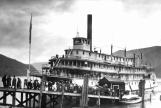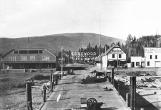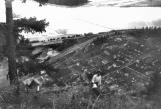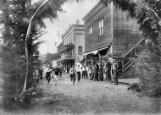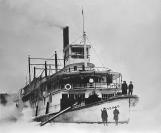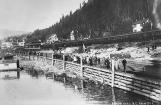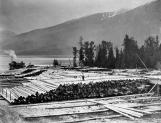1
Stability in any situation or place during the war was rare. It was more disruptive than beneficial, mainly because money had to be directed towards military needs, which left civil and domestic matters low priorities. Canada's participation in the war, something totally new for the nation, presented a challenge to both the government and industrialists. A whole new set of rules came into play regarding investments, responsibilities, duties and opportunities. The rather smooth, steady upward movement that arrived with forestry, mining, transportation and land development would either level off or take a retrograde step through this transition.One of the seemingly positive steps in the years 1914-15 came with the completion of the Kettle Valley Railway through to Vancouver. The railway, considered by the CPR a better answer to all the freight and passenger traffic along the southern section of the Province, was in the end a fiasco. For the Arrow Lakes, the news was just as bad. Formally the connecting link between southern Alberta, lower BC and the transcontinental railway at Revelstoke, the Arrow Lakes steamer route had now became a branch line. Business would be cut to a trickle compared to its former engagements. Prices for most minerals, not surprisingly, rose considerably causing a bit of resurgence in the Lardeau where mining had faded drastically compared with the early Nineteen-hundreds. Arrowhead too hung on tenaciously with one mill running and the CPR's commitment to shipping and railway activity. Around the corner at Comaplix a final blow was administered, again in a mysterious way. All the stock of lumber, the town and the SS Revelstoke that was conveniently packed near the lumber piles and slabs, was consumed in flame by way of seven fires strategically placed to assure total destruction. Because the water flume had been cut, no means of fighting the blaze was available. Now Comaplix was a ghost town.
Gradual disintegration of the CPR steamers on the Arrow Lakes started in 1916 when the SS Kootenay got stranded in the ice for 6 weeks. Her hull, badly compromised, relegated the vessel to spot duty and eventual retirement. The next year, after the SS Rossland sank at the Nakusp shipyard, she was broken beyond repair, dispensed with and floated up to the Hall Brothers' ranch across from Arrowhead.
